The Yên Tử Spring Festival 2019 has started with thousands of people flocking to attend one of the country’s most popular spiritual and cultural events in the northern province of Quảng Ninh.
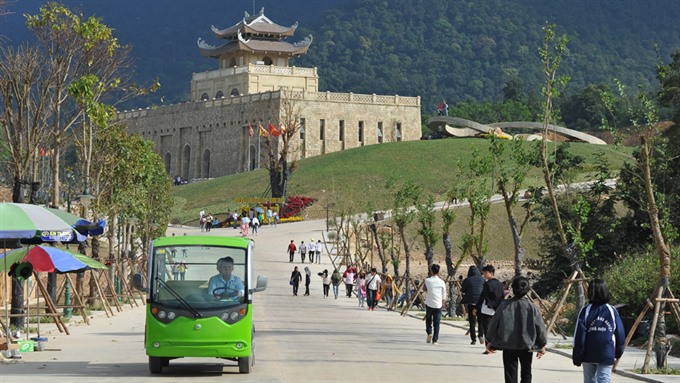
A corner of Tây Yên Tử Spiritual - Ecological Tourist Area. — Photo baobacgiang.com.vn
Provincial authorities yesterday held an opening ceremony at the Trúc Lâm Yên Tử Cultural Square in Thượng Yên Công Ward, Uông Bí City.
Head of Uông Bí City’s Culture and Information Division Lê Minh Quang said this year’s festival included a major art programme called Yên Tử Chào Xuân (Yên Tử Greeting Spring) with new performances.
Visitors to the festival will have the chance to enjoy traditional cultural activities such as dragon and unicorn dancing, traditional martial arts, flower displays, and admiring the Yên Tử yellow apricot flowers, Quang said.
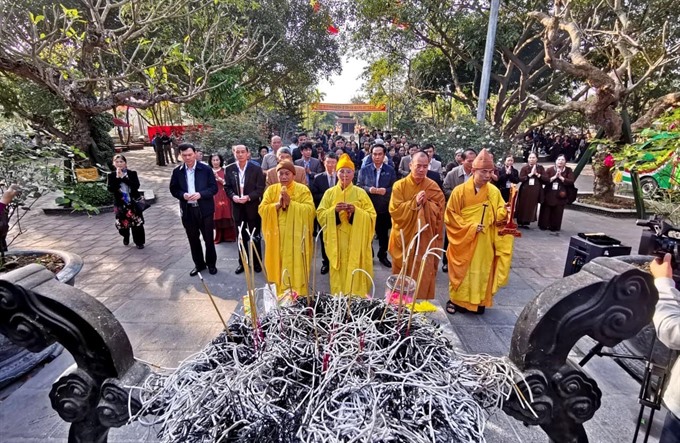
Buddhists offering incense before a procession at the Tây Yên Tử Festival. — VNA/VNS Photo Thành Đạt
Apart from traditional art programmes, they can also participate in folk games like cock fighting, tug of war, còn (cloth ball) throwing and chess, Quang added.
In the days ahead of the festival, about 150,000 tourists visited Yên Tử Mountain, up 25 per cent year-on-year, according to the official.
Yên Tử Mountain is located about 50 kilometres from Hạ Long City. The area has awe-inspiring scenery, surrounded by ancient pagodas.
The historical relics and landscapes complex includes a system of historical and cultural relics associated with the founding and development of Trúc Lâm Zen meditation in Việt Nam.
These relics are located in the border area between the three provinces of Bắc Giang, Hải Dương and Quảng Ninh, including five historical and scenic sites of Đông Yên Tử in Uông Bí City, Trần Dynasty Zone, Quảng Ninh Province, Tây Yên Tử in Bắc Giang Province and Côn Sơn-Kiếp Bạc-Thanh Mai in Hải Dương Province.
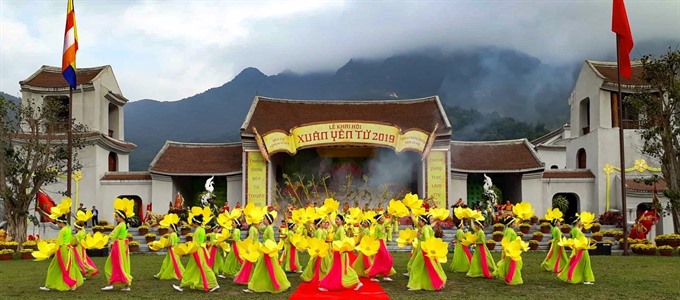
An art performance to open the Yên Tử Spring Festival 2019. — VNA/VNS Photo Trung Nguyên
Tây Yên Tử festival
The Tây Yên Tử (Western Yên Tử) Spring Festival and the Culture-Tourism Week 2019 has also opened in Bắc Giang Province.
The two events themed Khám phá vùng đất thiêng Tây Yên Tử (Discovering the Sacred Land of Tây Yên Tử) will take place from February 14 to 20 (from the 10th to 16th day of the first lunar month).
These spiritual, cultural and tourist events are organised to introduce the outstanding cultural values of Bắc Giang Province’s tourism, especially the cultural space of Trúc Lâm Zen Buddhist area in Tây Yên Tử region, to numerous domestic and foreign tourists, thus creating a breakthrough in attracting tourists, according to the province’s website baobacgiang.com.vn.
The events include activities such as the Buddhist statue procession, the opening of a culture-tourism camp, the award ceremony for a Bac Giang tourism photo contest and the launch of a photo contest on Tây Yên Tử
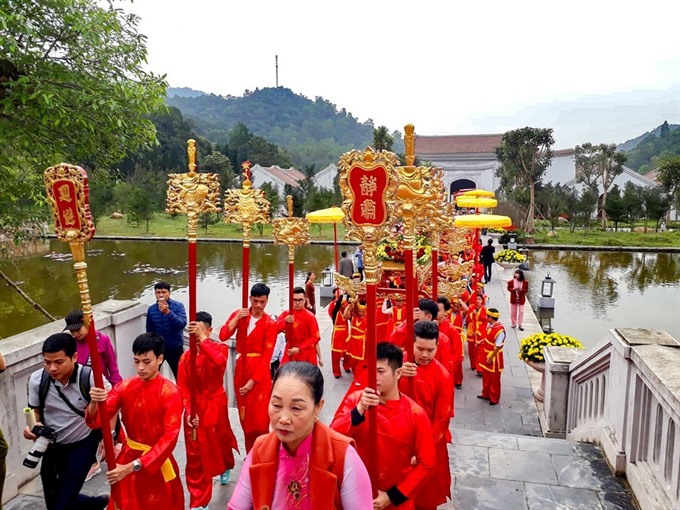
Part of a procession at the Yên Tử Spring Festival 2019 which opens on Thursday in the northern Quảng Ninh Province’s Uông Bí City. VNA/VNS Photo Trung Nguyên
Among the highlights of the events are the opening of an exhibition on culture-tourism products of the Trúc Lâm Zen Buddhist sect in Tây Yên Tử and a display of Vĩnh Nghiêm Pagoda’s woodblocks, which were recognised as part of the world documentary heritage of Asia-Pacific.
At the same time, Buddhist followers and tourists will have an opportunity to experience Soong hao singing of the Nùng people and a "love market" in the highlands of Tân Sơn Commune, Bắc Giang’s Lục Ngạn District.
Trần Nhân Tông (1258-1308), the third King of the Trần Dynasty (1225-1400), ascended to the throne when he was just 21. He was famed for defeating Mongol invaders twice during his 15-year reign.
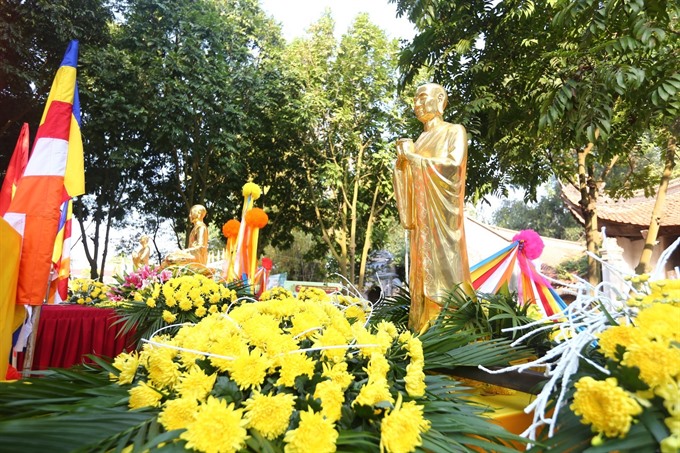
The Tây Yên Tử (Western Yên Tử) Spring Festival and the Culture-Tourism Week 2019 opens on Thursday in the Bắc Giang Province. — VNA/VNS Photo Thành Đạt
The king abdicated when he was 35 and spent the rest of his life on Yên Tử Mountain practicing and propagating Buddhism. He founded the first Vietnamese School of Buddhism called Thiền Tông or Trúc Lâm Yên Tử Zen on the 1,068m-high Yên Tử Mountain. The 20,000ha site is considered the capital of Vietnamese Buddhism.
Yên Tử became a major Buddhist Centre and King Trần Nhân Tông became its first leader under the religious name Điều Ngự Gíac Hoàng-Trần Nhân Tông. He ordered the construction of hundreds of religious buildings on Yen Tu Mountains for teaching and following a religious life.
Besides temples, it also preserves many old religious and cultural documents such as precious prayer-books and monks’ writings.
Yên Tử was listed as a special national relic site in September 2012. — VNS